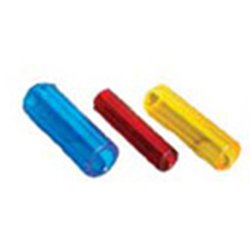Amelie walked into my office four months ago. The little bundle of energy stole my heart right away. Amelie is a 2-year-old little girl with a big personality. She has been diagnosed with developmental delays secondary to hydrocephalus. Her expressive communication was limited to signs for “please,” “want,” and of course, the inevitable, “more.”
After spending a few sessions working on speech sound production, and signs, we noticed some good progress with her imitation of labial sounds /p/, /b/, and /m/. But it was soon obvious to all of us that Amelie’s speech production and her repertoire of signs was insufficient to meet her communication needs. We needed something that was functional, portable, easy to use for both Amelie and her caregivers, and wouldn’t cost an arm and a leg to purchase.
After some research and comparisons, it appeared that the iPad app “Speak for Yourself” might work for Amelie. While everything appeared perfect on paper, we knew we had an uphill battle getting Amelie to use anything other than her signs of “please + more” to request for something. Like we expected, the first few sessions with the app were challenging. Between her protests, she attempted to hit the icons no more than 2-3 times during the entire 45-minute session. While it was discouraging at first, I knew we had to try it a few more times before giving up. For the next session, we closed all but one button on the screen (e.g. eat or give) and then one button on the next screen (e.g. banana or a preferred toy). However, despite all our attempts, Amelie would randomly hit the iPad screen or run her fingers across as if to scroll, or hit the home button. It wasn’t the best start and I felt myself wavering, wondering if I should perhaps try something else instead. But sometimes, you just have to trust yourself. (It certainly helped that Amelie’s parents and nanny are incredibly supportive and like me, felt that we were on the right track and needed to give Amelie a little more time). I decided to try it for another session. I’m not sure what changed, maybe the stars were aligned, or maybe she was hungry and really, really wanted that banana. That day, there were no protests. With minimum support to her elbow, Amelie isolated her finger and hit both buttons (eat and banana) to request her snack consistently for ten consecutive trials. Then, she did it again for grapes, and again for a spinning top, and again for her favorite princess wand. Two weeks later, she was requesting for items using Speak for Yourself on her own without adult support, not only in the clinic, but also at home.
I know that this is only the beginning. I know that we have a long, long way to go. But the mere fact that we have moved beyond signing “please” + “more” for everything, is already a huge step. Most importantly, she now has a communication system that works for her and can grow with her. We finally found a voice for Amelie.
Stay tuned for new blogs to keep you updated on Amelie’s progress with Speak for Yourself.
 Severe Apraxia of Speech and a seizure disorder, I attempted the “Sign to Talk” program (Tamara Kasper, M.S., CCC-SLP, BCBA; Nancy Kaufman, M.A., CCC-SLP). The program is offered as a “bridge to vocal communication for children that are not yet vocal imitators.” The program consists of two sets of flashcards and instruction manuals. The flashcards are pictures of the object or verb on one side and on the back they have the picture of the sign for the word. On the back, each card also displays a series of ”successive approximations” of the target word based on least physiological effort, as proposed by Nancy Kaufman.
Severe Apraxia of Speech and a seizure disorder, I attempted the “Sign to Talk” program (Tamara Kasper, M.S., CCC-SLP, BCBA; Nancy Kaufman, M.A., CCC-SLP). The program is offered as a “bridge to vocal communication for children that are not yet vocal imitators.” The program consists of two sets of flashcards and instruction manuals. The flashcards are pictures of the object or verb on one side and on the back they have the picture of the sign for the word. On the back, each card also displays a series of ”successive approximations” of the target word based on least physiological effort, as proposed by Nancy Kaufman.
 Once Sam’s tactile defensiveness was significantly reduced, my next goal was to stabilize his jaw and increase jaw grading (i.e. opening and closing of his mouth to various jaw heights without jaw sliding or jerking). Since Sam tended to “fix” his jaw at jaw height 1 (closed mouth position) during speech, my objective was to move him gradually through Sara R. Johnson’s Bite Block hierarchy. Unless Sam was able to lower his jaw to jaw height 3 or 4, production of vowels such as /Ɔ/ would be challenging. We started with Bite Block #2 and within several weeks were able to move to Bite Block #6, which requires considerable jaw opening. Sam can now hold a lower jaw position without sliding. As a part of a comprehensive oral motor or oral placement program, we also worked on lip rounding, lip seal and tongue retraction. Sara R. Johnson’s Horn and Straw Hierarchy’s were employed for this purpose. In addition, a tongue depressor with added “weights” (pennies taped to both ends) were used to build lip strength and lip closure.
Once Sam’s tactile defensiveness was significantly reduced, my next goal was to stabilize his jaw and increase jaw grading (i.e. opening and closing of his mouth to various jaw heights without jaw sliding or jerking). Since Sam tended to “fix” his jaw at jaw height 1 (closed mouth position) during speech, my objective was to move him gradually through Sara R. Johnson’s Bite Block hierarchy. Unless Sam was able to lower his jaw to jaw height 3 or 4, production of vowels such as /Ɔ/ would be challenging. We started with Bite Block #2 and within several weeks were able to move to Bite Block #6, which requires considerable jaw opening. Sam can now hold a lower jaw position without sliding. As a part of a comprehensive oral motor or oral placement program, we also worked on lip rounding, lip seal and tongue retraction. Sara R. Johnson’s Horn and Straw Hierarchy’s were employed for this purpose. In addition, a tongue depressor with added “weights” (pennies taped to both ends) were used to build lip strength and lip closure.

